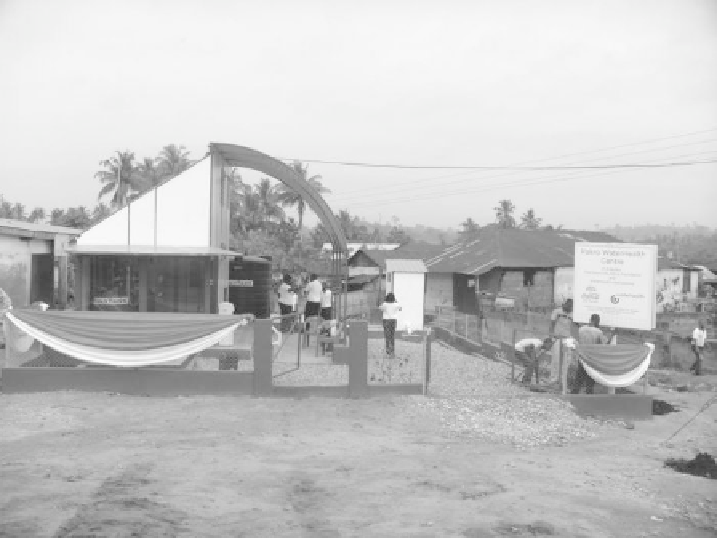Environmental Engineering Reference
In-Depth Information
FIGURE 22.3
WHC funded by a corporate partner under construction in Ghana.
Several of the corporations and respected organizations such as the IFC have recognized
the long-term sustainability of WHCs and prefer to partner with WaterHealth (Figure 22.3)
as they know that their investment will create a long-lasting impact.
WaterHealth works closely with nonproit organizations that are active in geographies
where it is present. WaterHealth believes that locally active NGOs are the best partners to
have because they have spent considerable effort to gain the trust of local communities,
and they are intimately familiar with the local language and culture. After installing the
irst WHC through its subsidiary, WaterHealth Ghana, in Ghana, WaterHealth partnered
with Safe Water Networks (SWN) to install ive additional WHCs that were funded by
SWN. Since then, as part of the SWA partnership, WaterHealth has installed close to 20
additional WHCs. One of the strengths of WaterHealth is that it believes in fostering a
strong relationship with communities and works closely with them in establishing afford-
able usage fees for the water puriication service.
22.2.4 Technology
Depending on the source of water, whether from a surface body or from a bore well, the
water treatment method has to be custom designed to address the local contaminants pres-
ent. Generally speaking, surface water sources have turbidity, organics, and pathogens as
primary contaminants. Groundwater is generally clear, may or may not have microbio-
logical contamination, but is generally accompanied by higher levels of dissolved solids
that may include more toxic and widely regulated heavy and transition metals. Surface
water may have taste, odor, and color issues emanating from the presence of organics in
the water. In the groundwater, dissolved solids largely affect these attributes. WaterHealth

